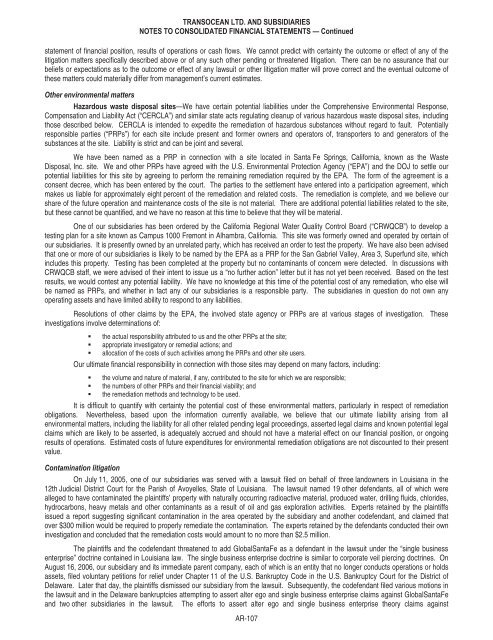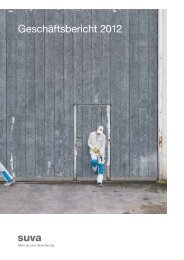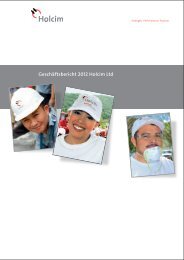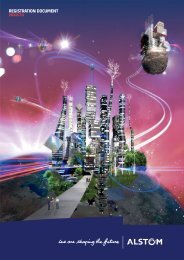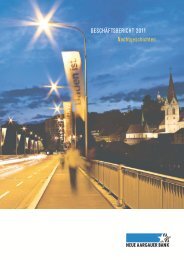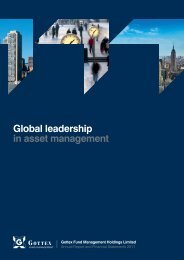Transocean Proxy Statement and 2010 Annual Report
Transocean Proxy Statement and 2010 Annual Report
Transocean Proxy Statement and 2010 Annual Report
You also want an ePaper? Increase the reach of your titles
YUMPU automatically turns print PDFs into web optimized ePapers that Google loves.
TRANSOCEAN LTD. AND SUBSIDIARIES<br />
NOTES TO CONSOLIDATED FINANCIAL STATEMENTS — Continued<br />
statement of financial position, results of operations or cash flows. We cannot predict with certainty the outcome or effect of any of the<br />
litigation matters specifically described above or of any such other pending or threatened litigation. There can be no assurance that our<br />
beliefs or expectations as to the outcome or effect of any lawsuit or other litigation matter will prove correct <strong>and</strong> the eventual outcome of<br />
these matters could materially differ from management’s current estimates.<br />
Other environmental matters<br />
Hazardous waste disposal sites—We have certain potential liabilities under the Comprehensive Environmental Response,<br />
Compensation <strong>and</strong> Liability Act (“CERCLA”) <strong>and</strong> similar state acts regulating cleanup of various hazardous waste disposal sites, including<br />
those described below. CERCLA is intended to expedite the remediation of hazardous substances without regard to fault. Potentially<br />
responsible parties (“PRPs”) for each site include present <strong>and</strong> former owners <strong>and</strong> operators of, transporters to <strong>and</strong> generators of the<br />
substances at the site. Liability is strict <strong>and</strong> can be joint <strong>and</strong> several.<br />
We have been named as a PRP in connection with a site located in Santa Fe Springs, California, known as the Waste<br />
Disposal, Inc. site. We <strong>and</strong> other PRPs have agreed with the U.S. Environmental Protection Agency (“EPA”) <strong>and</strong> the DOJ to settle our<br />
potential liabilities for this site by agreeing to perform the remaining remediation required by the EPA. The form of the agreement is a<br />
consent decree, which has been entered by the court. The parties to the settlement have entered into a participation agreement, which<br />
makes us liable for approximately eight percent of the remediation <strong>and</strong> related costs. The remediation is complete, <strong>and</strong> we believe our<br />
share of the future operation <strong>and</strong> maintenance costs of the site is not material. There are additional potential liabilities related to the site,<br />
but these cannot be quantified, <strong>and</strong> we have no reason at this time to believe that they will be material.<br />
One of our subsidiaries has been ordered by the California Regional Water Quality Control Board (“CRWQCB”) to develop a<br />
testing plan for a site known as Campus 1000 Fremont in Alhambra, California. This site was formerly owned <strong>and</strong> operated by certain of<br />
our subsidiaries. It is presently owned by an unrelated party, which has received an order to test the property. We have also been advised<br />
that one or more of our subsidiaries is likely to be named by the EPA as a PRP for the San Gabriel Valley, Area 3, Superfund site, which<br />
includes this property. Testing has been completed at the property but no contaminants of concern were detected. In discussions with<br />
CRWQCB staff, we were advised of their intent to issue us a “no further action” letter but it has not yet been received. Based on the test<br />
results, we would contest any potential liability. We have no knowledge at this time of the potential cost of any remediation, who else will<br />
be named as PRPs, <strong>and</strong> whether in fact any of our subsidiaries is a responsible party. The subsidiaries in question do not own any<br />
operating assets <strong>and</strong> have limited ability to respond to any liabilities.<br />
Resolutions of other claims by the EPA, the involved state agency or PRPs are at various stages of investigation. These<br />
investigations involve determinations of:<br />
� the actual responsibility attributed to us <strong>and</strong> the other PRPs at the site;<br />
� appropriate investigatory or remedial actions; <strong>and</strong><br />
� allocation of the costs of such activities among the PRPs <strong>and</strong> other site users.<br />
Our ultimate financial responsibility in connection with those sites may depend on many factors, including:<br />
� the volume <strong>and</strong> nature of material, if any, contributed to the site for which we are responsible;<br />
� the numbers of other PRPs <strong>and</strong> their financial viability; <strong>and</strong><br />
� the remediation methods <strong>and</strong> technology to be used.<br />
It is difficult to quantify with certainty the potential cost of these environmental matters, particularly in respect of remediation<br />
obligations. Nevertheless, based upon the information currently available, we believe that our ultimate liability arising from all<br />
environmental matters, including the liability for all other related pending legal proceedings, asserted legal claims <strong>and</strong> known potential legal<br />
claims which are likely to be asserted, is adequately accrued <strong>and</strong> should not have a material effect on our financial position, or ongoing<br />
results of operations. Estimated costs of future expenditures for environmental remediation obligations are not discounted to their present<br />
value.<br />
Contamination litigation<br />
On July 11, 2005, one of our subsidiaries was served with a lawsuit filed on behalf of three l<strong>and</strong>owners in Louisiana in the<br />
12th Judicial District Court for the Parish of Avoyelles, State of Louisiana. The lawsuit named 19 other defendants, all of which were<br />
alleged to have contaminated the plaintiffs’ property with naturally occurring radioactive material, produced water, drilling fluids, chlorides,<br />
hydrocarbons, heavy metals <strong>and</strong> other contaminants as a result of oil <strong>and</strong> gas exploration activities. Experts retained by the plaintiffs<br />
issued a report suggesting significant contamination in the area operated by the subsidiary <strong>and</strong> another codefendant, <strong>and</strong> claimed that<br />
over $300 million would be required to properly remediate the contamination. The experts retained by the defendants conducted their own<br />
investigation <strong>and</strong> concluded that the remediation costs would amount to no more than $2.5 million.<br />
The plaintiffs <strong>and</strong> the codefendant threatened to add GlobalSantaFe as a defendant in the lawsuit under the “single business<br />
enterprise” doctrine contained in Louisiana law. The single business enterprise doctrine is similar to corporate veil piercing doctrines. On<br />
August 16, 2006, our subsidiary <strong>and</strong> its immediate parent company, each of which is an entity that no longer conducts operations or holds<br />
assets, filed voluntary petitions for relief under Chapter 11 of the U.S. Bankruptcy Code in the U.S. Bankruptcy Court for the District of<br />
Delaware. Later that day, the plaintiffs dismissed our subsidiary from the lawsuit. Subsequently, the codefendant filed various motions in<br />
the lawsuit <strong>and</strong> in the Delaware bankruptcies attempting to assert alter ego <strong>and</strong> single business enterprise claims against GlobalSantaFe<br />
<strong>and</strong> two other subsidiaries in the lawsuit. The efforts to assert alter ego <strong>and</strong> single business enterprise theory claims against<br />
AR-107


